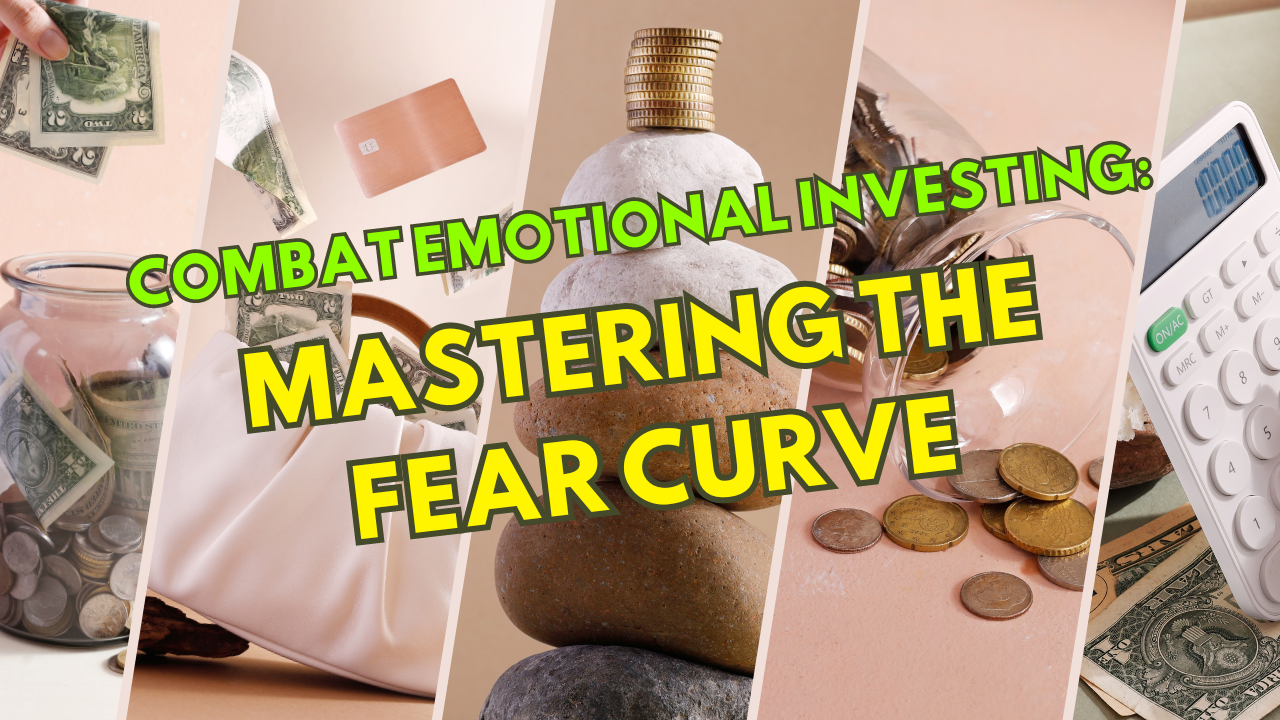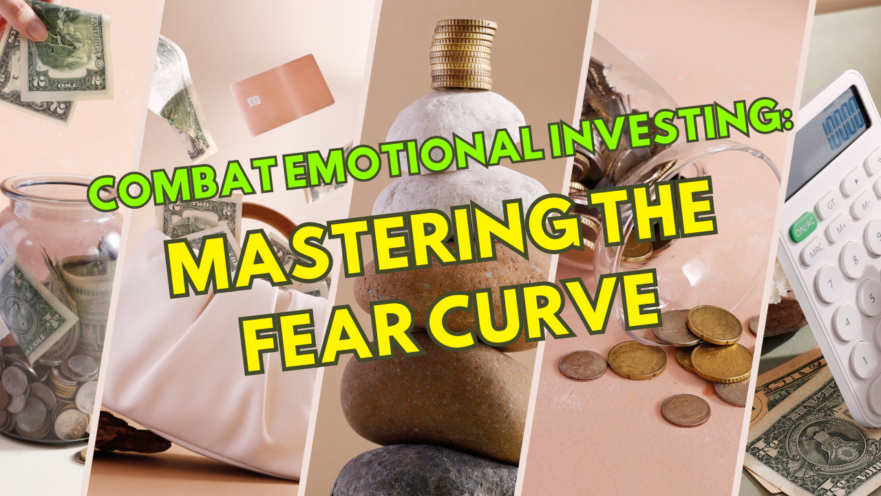
In the unpredictable world of investing, the “fear curve” is an all-too-familiar emotional roller coaster that leads many investors to make decisions that ultimately harm their financial health. In times of heightened volatility in the financial markets, the natural reaction for many investors is to react with fear and anxiety. It’s this fear curve that drives people to buy at market peaks, overpaying for appreciated assets, and sell at troughs, missing out on potentially lucrative opportunities.
Market volatility can unsettle the most seasoned of investors, but with strategic planning and a calm approach, it's possible to weather the storm and emerge in a stronger position. The irony is, the most significant opportunities often emerge when ideas are new or widely disliked, especially when market panic and despair peak. It’s during these times that investing feels most uncomfortable, yet, paradoxically, it’s also when the best buying opportunities often arise. Let’s explore some foundational rules to help you make more rational decisions and avoid the emotional roller coaster of investing.
A declining market may seem like a cause for concern, but for the astute investor, it represents an opportunity. Quality companies may be available at lower prices, presenting a chance to purchase shares of financially sound firms at a discount. This approach requires a keen eye for opportunity and the patience to hold investments until the market recovers. Trying to time the market is foolhardy, but searching for attractive value when the market puts them on sale, adopting a long-term perspective and focusing on the fundamentals can yield significant benefits.
Regular, disciplined investing—known as systematic investing or dollar cost averaging—can significantly impact your financial growth over time. This can be facilitated through automatic direct deposits into investment accounts, participating in employer-sponsored retirement plans, and opting for dividend reinvestment programs for mutual funds, ETFs, and dividend-paying stocks. This strategy helps in building wealth steadily, leveraging the power of compounding.
The market's short-term movements are largely unpredictable. Despite the plethora of forecasts you might hear in the financial media, even experts often miss the mark. For most investors, especially those not engaged in day trading, daily market volatility should be a non-issue. Focus instead on the broader economic and financial landscape, ignoring the daily noise that can lead to hasty, emotionally driven decisions.
Protecting your current assets is a prerequisite for wealth generation. A sound risk-management strategy involves careful position-sizing, which limits the size of any single investment within your portfolio. This approach helps mitigate panic selling during downturns, allowing you to maintain composure and confidence in your investment strategy.
The adage "don't put all your eggs in one basket" holds especially true in the context of investment strategies. A concentrated portfolio may offer substantial returns during good times but can lead to significant losses when the market takes a downturn. Diversification is the cornerstone of both building and preserving wealth. It's advisable to spread investments across various asset classes, (like stocks, bonds, cash, real estate, and possibly other alternatives) as well as across industries, and geographic locations. Diversification not only aims to enhance returns but also has the added benefit of potentially significantly reducing overall portfolio risk.
Market downturns can be disheartening, but they also present unique opportunities for strategic tax planning. Tax-loss harvesting allows investors to sell off investments that have decreased in value, offsetting the capital gains that have been realized from other investments. This strategy not only helps in managing your investment portfolio more effectively but also in reducing your overall tax liability, making it a prudent move during market dips.
Having an established investment plan will help you have more confidence during the volatile times. But it’s crucial to adhere to the plan. Don’t make changes out of fear. Barring annual adjustments or necessary rebalancing, your investment plan should be the guiding light to a sound financial future. Constantly shifting strategies in reaction to market volatility is a common pitfall that leads to emotional investing. By committing to a well-thought-out plan, you safeguard against the whims of market sentiment and position yourself for long-term success.
By following these basic rules, investors can seek to protect themselves against the greatest risks and capitalize on the most substantial opportunities. Overcoming the fear curve is not about eliminating emotions but managing them effectively to make informed, rational investment decisions. Remember, in the realm of investing, discipline and patience are virtues that often lead to greater prosperity.






